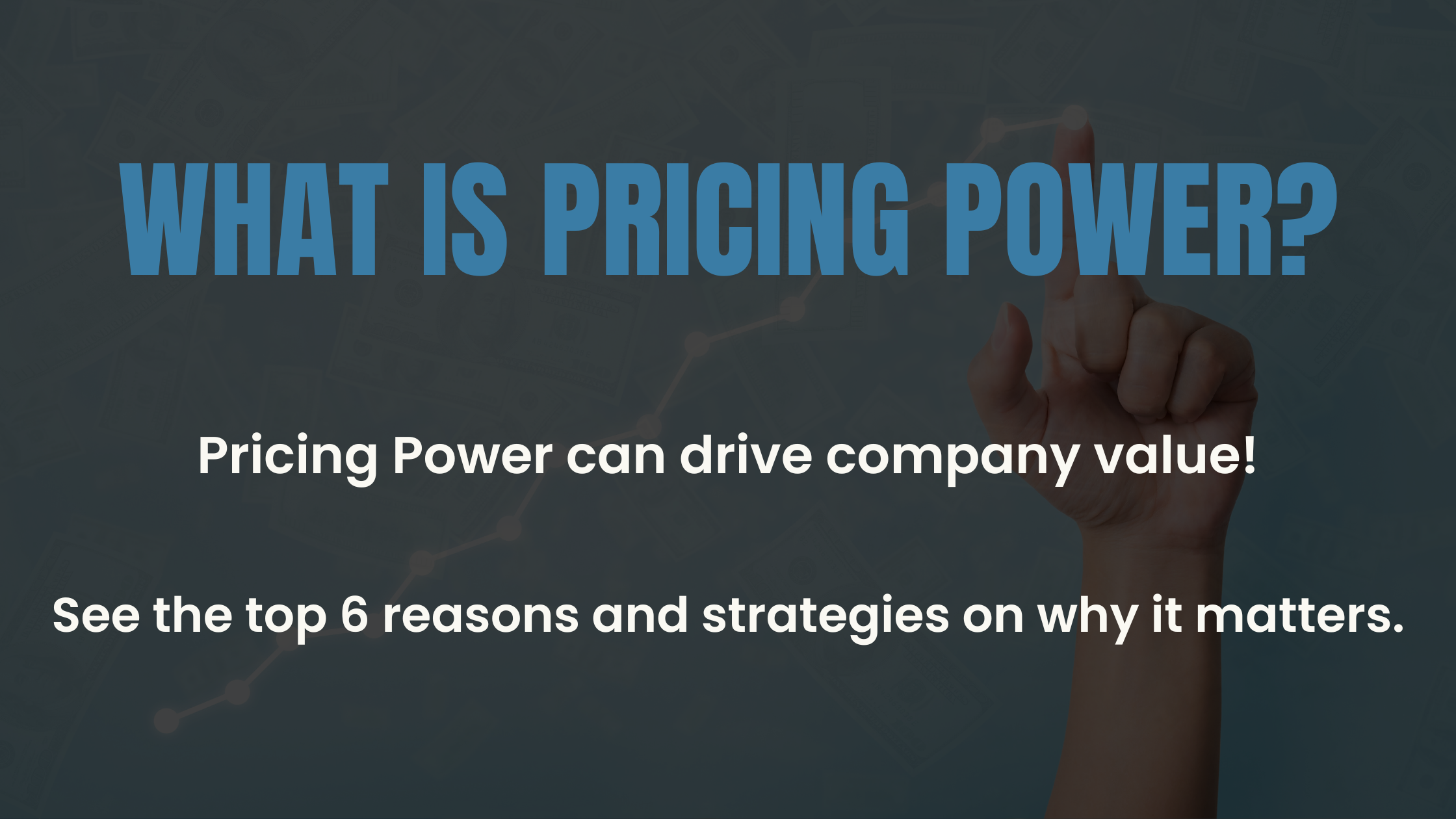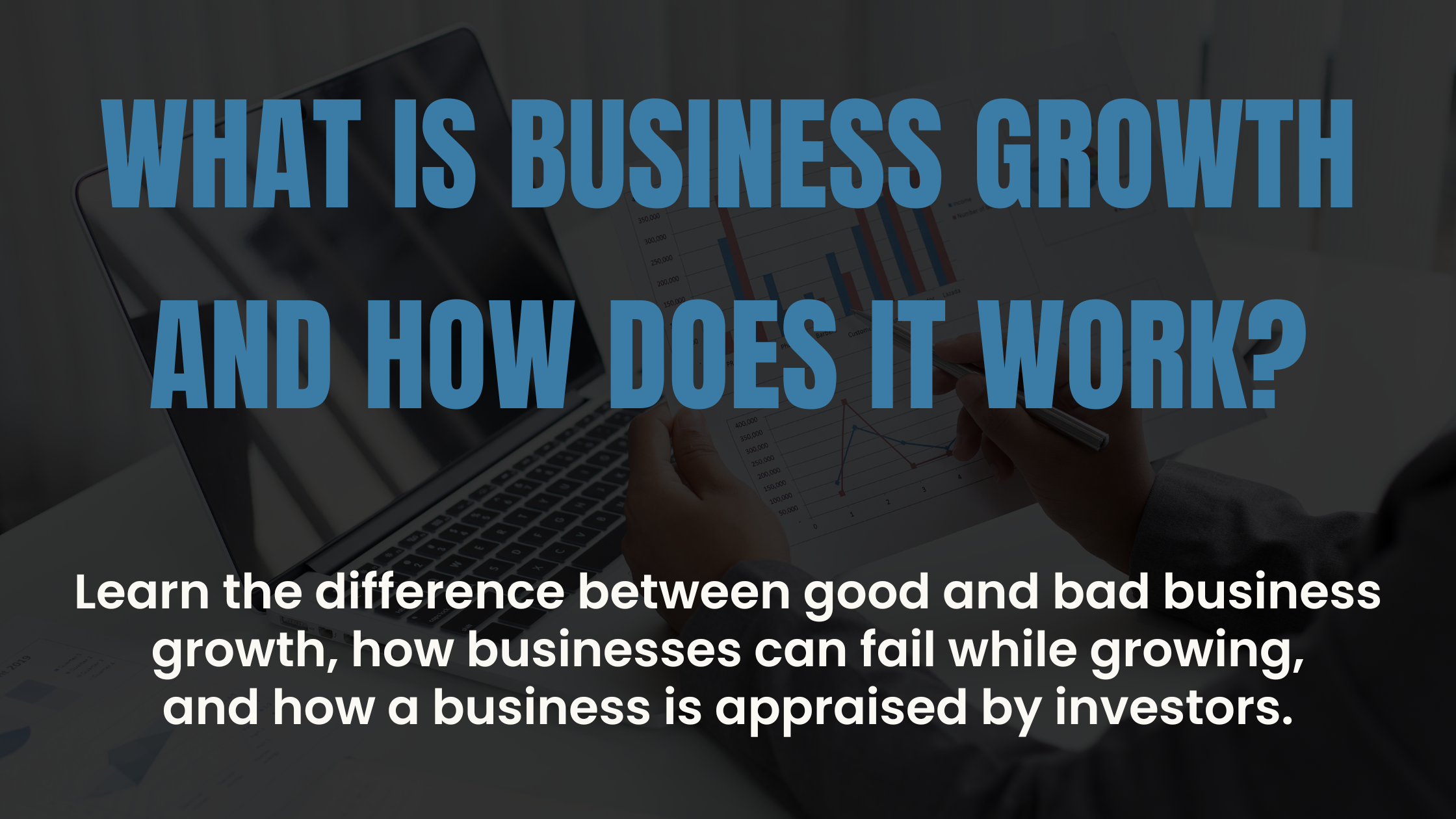
Pricing power refers to a company’s ability to set and maintain prices at levels that are higher than its competitors. It also involves being able to do so without losing significant market share.
It is a measure of a company’s pricing flexibility and its ability to capture value resulting in improved profits. This, in turn, also improves shareholder value. Developing pricing power is crucial for companies to drive value and achieve long-term business success.
Pricing power is influenced by various factors including:
- market demand,
- competitive landscape,
- customer perception,
- brand strength,
- product differentiation, and
- overall market dynamics.
When a company has pricing power, it has the ability to set prices strategically, adapt to changing market conditions, and command premium prices. This allows the company to generate higher revenue, improve margins, and ultimately capture a greater share of the value they create.
Here are some strategies your company can use to develop pricing power…
1) Build a Strong Brand and Reputation

A strong brand and reputation can significantly impact pricing power. A well-known and respected brand can create customer loyalty, trust, and perceived value. Customers are often willing to pay a premium for products or services associated with a reputable brand.
Building a strong brand involves consistent delivery of high-quality products or services, excellent customer experiences, and maintaining a positive reputation. Invest in building your brand identity, brand image, and brand equity through effective marketing and communication strategies.
This includes:
- creating a compelling brand story,
- establishing brand recognition,
- cultivating loyalty, and
- maintaining a positive reputation through customer testimonials, reviews, and feedback.
A strong brand can justify higher prices, differentiate your offerings from competitors, and enhance your pricing power.
2) Focus on Customer Value

It’s important to effectively communicate the value proposition of your products or services to your customers. Highlight the unique features, benefits, and value that your offerings provide. Use marketing and communication strategies to clearly convey the value of your products or services, and how they address customers’ needs.
Show how your offerings are superior or differentiated from competitors, and why they are worth the premium price.
This can help justify higher prices in the minds of customers and build perceived value, which can enhance your pricing power.
3) Differentiate Your Offerings

One of the most effective ways to develop pricing power is by differentiating your products or services from your competitors. When customers perceive your offerings as unique, superior, and valuable, they may be willing to pay a premium for them.
Differentiation can be achieved through various means, such as superior product quality, innovative features, exceptional customer service, exclusive branding, or customization. Conduct market research to understand customer needs, preferences, and pain points. Then develop offerings that address those needs in a unique and compelling way.
By offering different products or services, you can create a competitive advantage that allows you to command higher prices and develop pricing power.
4) Develop Expertise

Build expertise in your industry or niche and establish yourself as a thought leader.
Customers perceive expertise as a mark of excellence and trustworthiness. When you are recognized as an expert, customers are more likely to trust you and be willing to pay a premium.
This can result in higher prices and improved profits, as customers are willing to pay for the added value and trust.
5) Improve Quality

Continuously improving the quality of your offerings can justify higher prices and create customer loyalty. High-quality products or services are associated with superior performance, reliability, and durability.
When you consistently deliver products or services that meet or exceed customer expectations, it enhances customer perceptions of your brand. Customers are willing to pay a premium for quality as they perceive it as an indicator of value and reliability.
By improving quality, you can position your offerings as premium products or services, commanding higher prices and developing pricing power.
6) Optimize Pricing Strategies

It’s important to constantly review and optimize your pricing strategy to develop pricing power. Conduct pricing analysis to evaluate the effectiveness of your pricing strategy. Evaluate factors such as price elasticity, customer segmentation, competitive benchmarking, and profit analysis.
Test different pricing strategies such as value-based pricing, cost-plus pricing, or dynamic pricing. Do this to determine which approach works best for your business and market. Consider using pricing software or tools to help you analyze data, make informed pricing decisions, and optimize your pricing strategy.
Regularly review and adjust your prices based on market conditions, customer feedback, and competitive landscape. This will ensure that your prices remain relevant and competitive while also reflecting the value of your offerings. By optimizing your pricing strategy, you can maximize your pricing power and drive value for your business.
By developing pricing power, your company can drive value in several ways. It can increase revenue and profitability by capturing higher prices and improving margins. It can also enhance customer perception of your brand, build customer loyalty, and foster customer advocacy. These efforts can lead to repeat business and positive word-of-mouth marketing.
Pricing power can create a barrier to entry for competitors as customers are willing to pay a premium for your offerings. This can help your company establish a sustainable competitive advantage and position itself as a leader in the market.
Overall, developing pricing power requires a deep understanding of your customers, market, and competitive landscape. By focusing on building a strong brand, providing value to customers, and continually improving your offerings, you can create pricing power that drives value for your business!

To learn more, check out our process expertise tips sheets here.









